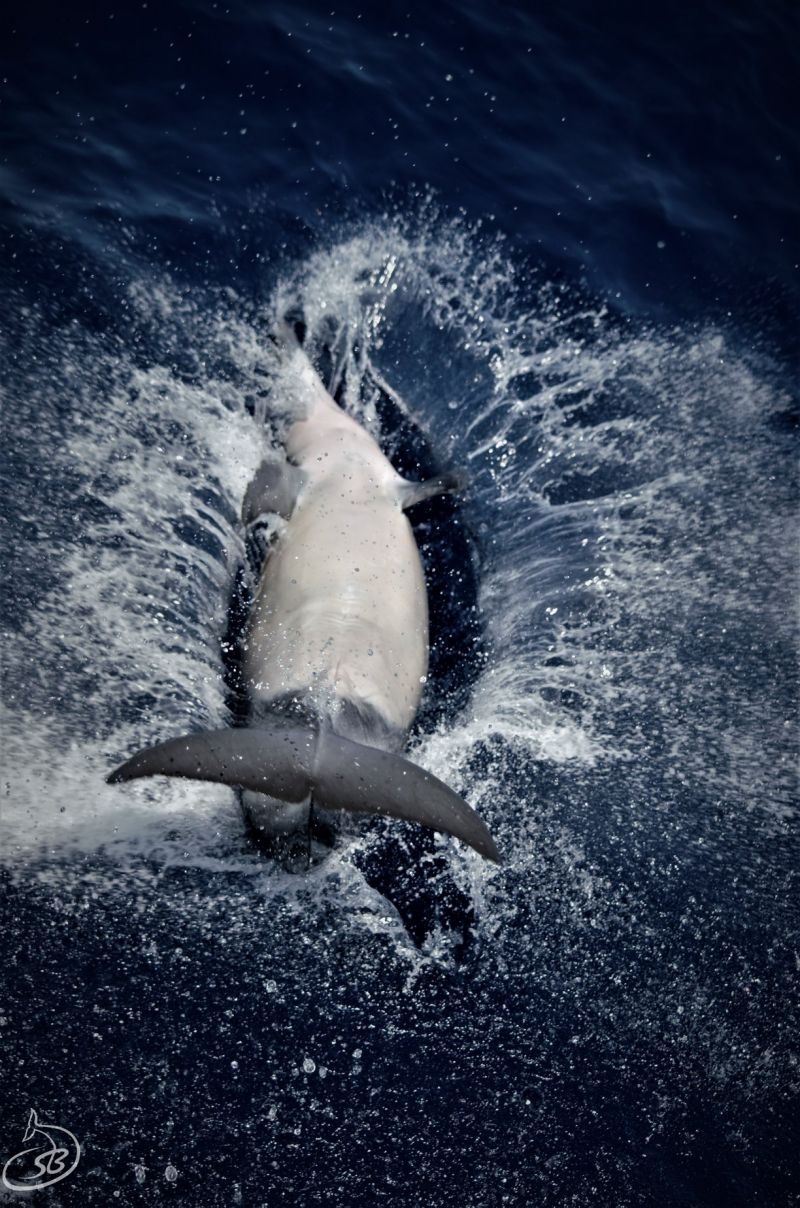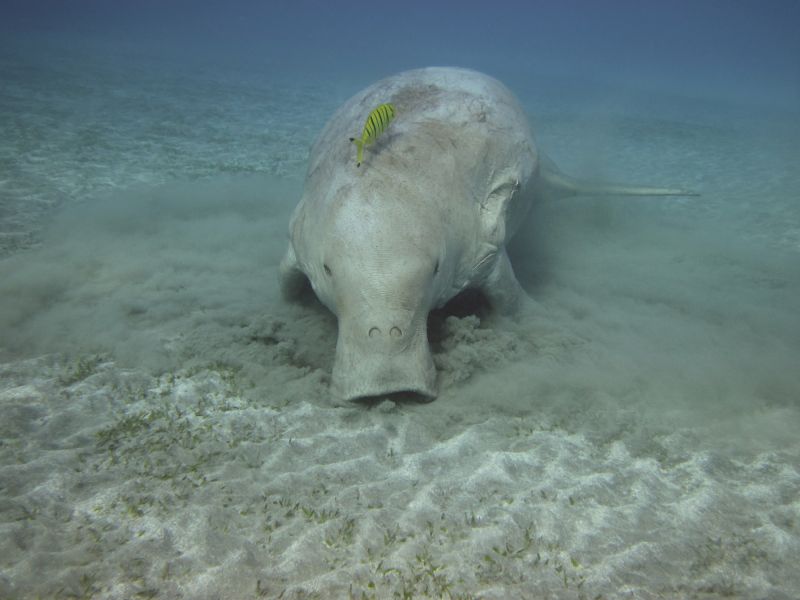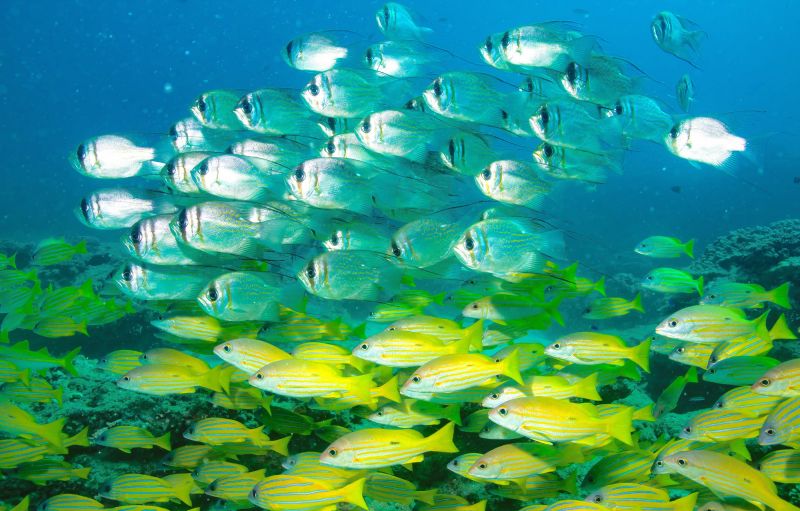In March and April each year, the coral colonies on Ningaloo Reef spawn, exploding billions of tiny eggs into the water column and triggering a massive food chain event that lasts until September.
The microscopic coral larvae attract baitfish that mass in huge shimmering balls, which in turn attract bigger pelagic fish. Hundreds of species of fish, rays, dolphins and sharks – including the world’s largest fish, the Whale Shark – turn up to partake in the free banquet.
“With so much going on, it’s hard to pin down a Top Ten favourite species,” says Mark Ferguson, owner, with his wife Debbie, of Exmouth Dive & Whalesharks Ningaloo. “But there’s no doubt that the Whale Shark is at the top of most people’s bucket list.”

Exmouth Dive & Whalesharks Ningaloo holds two of a small number of licences that allow guests to swim with the Whale Sharks and Mark guarantees an encounter.
You can’t help but be awed, Mark says, swimming alongside these harmless, plankton-eating behemoths, which average 12 metres in length and are daily visitors to Ningaloo between March and August.
Manta and Mobula Rays are also Ningaloo plankton feeders. They’re inquisitive and playful and visitors can see them ‘flying’ through the ocean on their four- to six-metre wingspans and performing spectacular leaps and flips.
The other great performers are the dolphins - especially the schools of 200 or so Spinner Dolphins that effortlessly jump from the water and spin twists and triple somersaults - but Bottle-nosed Dolphins and the rarer, endemic Humpback Dolphins also put on impressive shows.

Spinner Dolphin, Credit: Sara Barbieri
The Whale shark’s carnivorous cousins are plentiful at Ningaloo, including White Tip, Black Tip, Hammerhead, Lemon, Grey Nurse, Tawny, Leopard and Tiger sharks, as well as the placid, be-whiskered Wobbegong.
While that might sound a tad unnerving, Mark says, “The sharks aren’t interested in us: they’re busy rounding up the baitfish and trevally and it’s incredibly exciting to watch them feeding.” Hunting alongside the sharks are the bigger pelagic fish such as trevally, which hang motionless in the water column and then dart with lightning speed into the bait balls to snatch a feed.
Down on the reef itself, a whole other world opens up. Hiding under coral ledges, bulky Queensland Grouper - measuring up to 1.5 metres and 100 kg – hang out, ready to gulp unsuspecting passing baitfish in their enormous mouths.
On snorkelling and diving trips, Mark and Debbie keep an eye out for Dugongs – marine mammals more closely related to elephants than fish, which weigh around 300kg. Dugongs live up to their nickname of ‘sea cow’, snuffling along the sandy bottom, grazing among the sea grasses, often with a baby in tow.
Loggerhead, Hawksbill and Green Turtles are year-round inhabitants of Ningaloo. After mating in the water, the females start hauling out on the beaches to lay their eggs in late October.

Dugong on the Ningaloo Seabed
If you’re lucky, you can see the hatchlings emerge between December and February.
From July to October, over 30,000 Humpback Whales make their annual migration from Antarctica, stopping to rest, breed and calve in the shelter of Ningaloo. The mothers use the reef as protection for their newborn babies, or neonates.
Exmouth Dive & Whalesharks Ningaloo is in its third year of a whale swimming trial. While it’s a rare treat to see the pale grey newborns with their floppy dorsal fins, Mark says they average a whale sighting around every seven minutes.
We offer a sunset whale watching tour, when the waters of the gulf are like a mirror. There are hundreds of whales and we just move from one group to another, watching mothers and calves breaching and fin-slapping.”
And at any time of year, there are the myriads of gaudy and gorgeous reef fish, corals and other critters that help make Ningaloo one of the ocean’s richest ecosystems and one of the world’s most spectacular dive destinations. Around 250 corals and 500 species of fish have been identified at Ningaloo – many of them endemic.

School of Blue-striped Snapper with Threadfin Pearl Perch, Credit: Sabine Zucculo
There’s an anemone fish that you won’t find in any book, as well as Threadfin perch with their tassle-like fins; a unique red-eyed frogfish and numerous neon-coloured nudibranchs.
“On a bad day, it’s amazing,” says Mark. “On a good day, it blows your mind!”
You can experience all the amazing marine life at Ningaloo with the following tours from Exmouth Dive and Whalesharks Ningaloo:
Whaleshark Swim Humpback Whale Swim Outer Reef or Islands Scuba Dive & Snorkel Open Water Diving Course


